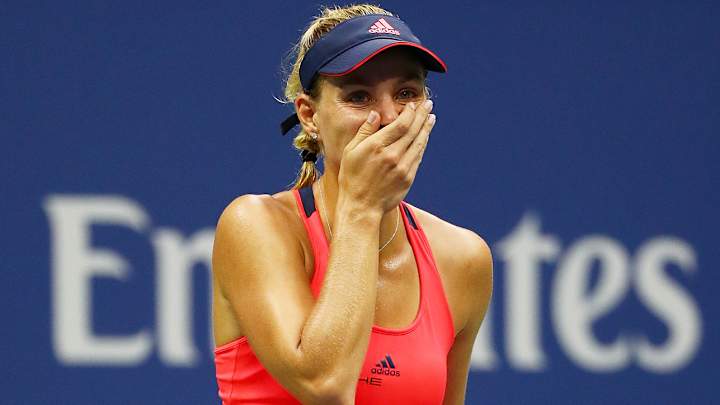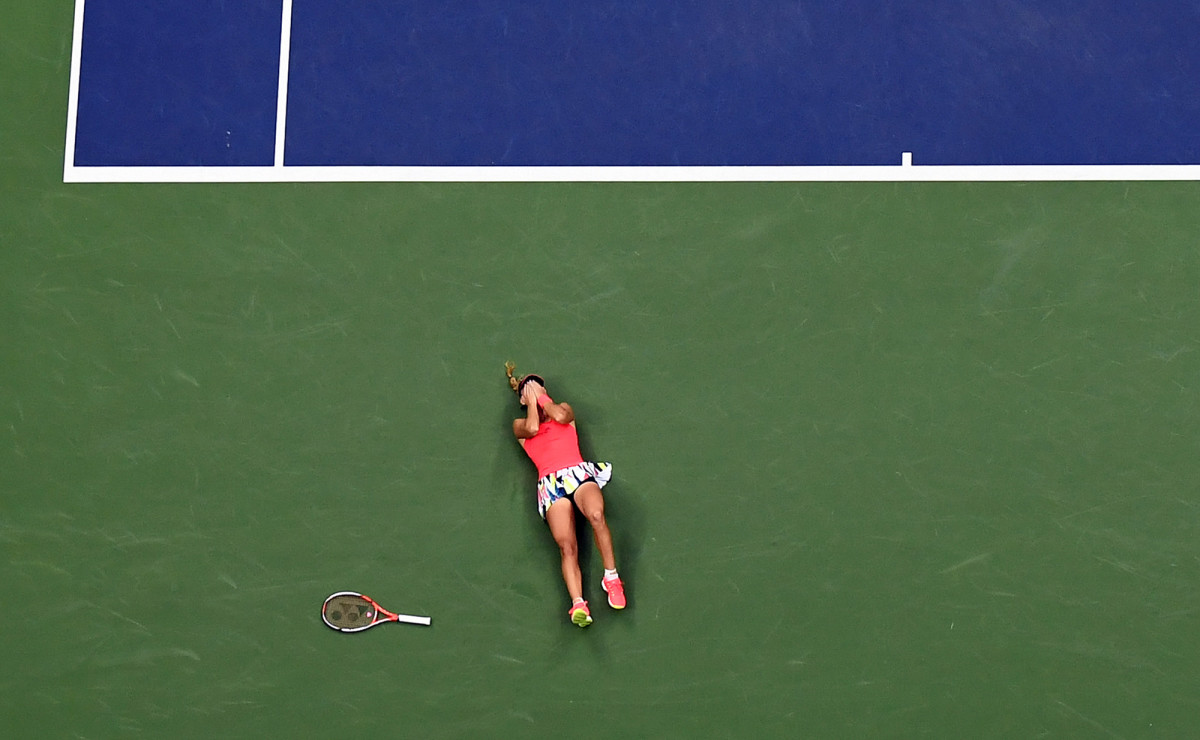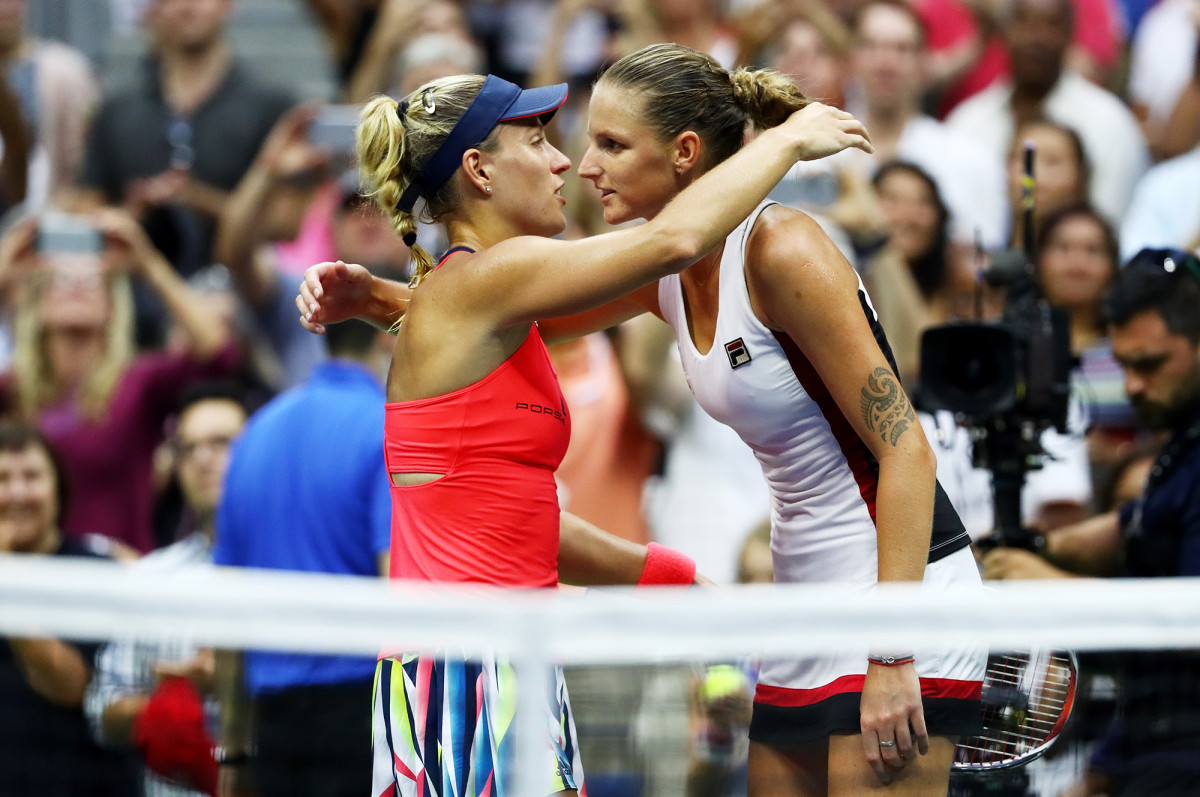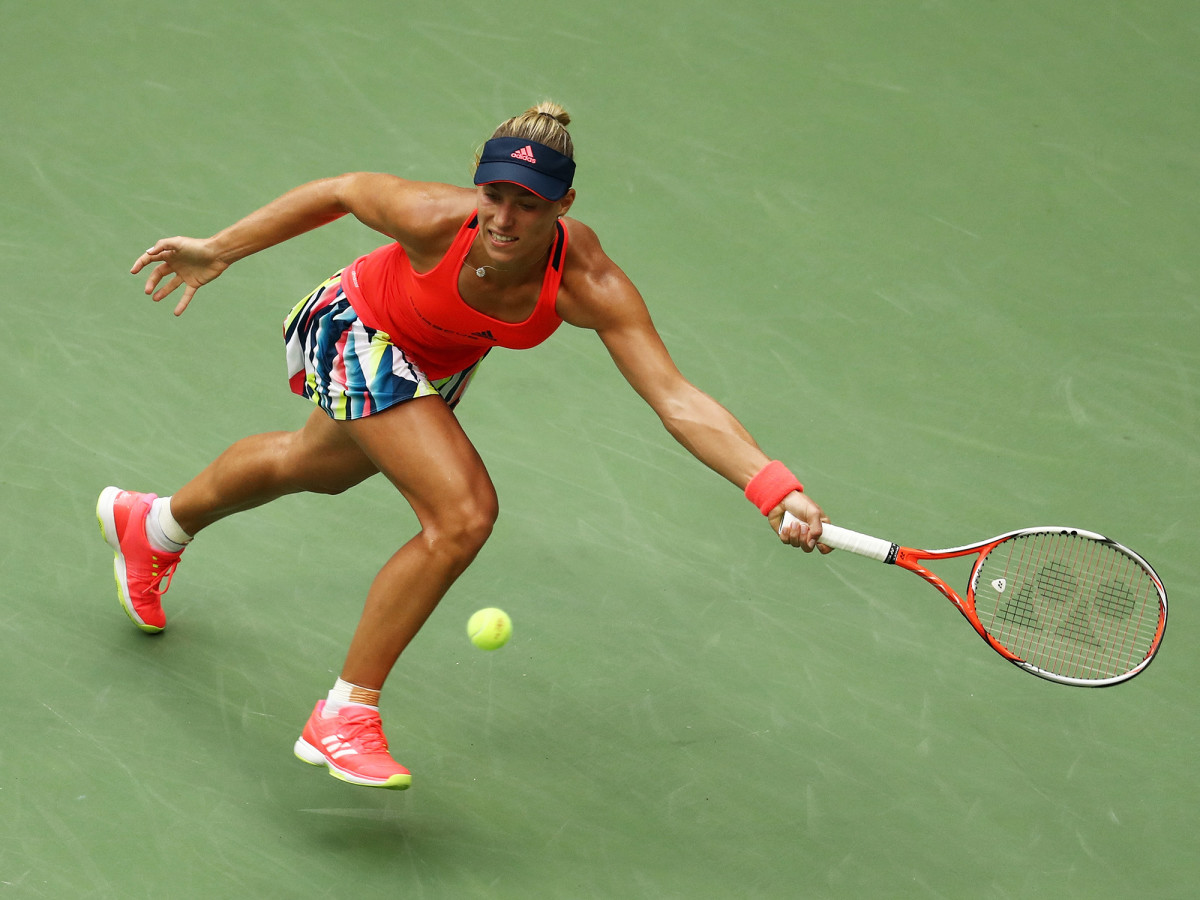Kerber proves worthy of No. 1 ranking with second major title of 2016 at U.S. Open

NEW YORK – As late as two hours before a scintillating U.S. Open women’s final between Angelique Kerber and Karolina Pliskova, you could have landed a ticket in the promenade section of Arthur Ashe Stadium for as low as $23. Demand had taken a significant tumble over the previous day-and-a-half after Pliskova scored the upset of the tournament, knocking off Serena Williams in straight sets in the semifinals. The women’s final was expected to be a showdown for Player of The Year honors between Kerber (winner of the Australian Open, finalist at Wimbledon, and a silver medalist at the Rio Olympics) and Williams (finalist in Australia, finalist at Roland Garros, winner at Wimbledon, and seemingly forever the No. 1 player in the world). Instead, it became an fascinating duel between the best player on the WTA Tour this year and its hottest player over the last couple of weeks.
For the 25,268 who did make it out on Saturday afternoon—boldface names included U.S. Olympian Allyson Felix and actors Jessica Alba and Jon Hamm—they were treated to one of the best women’s finals in recent vintage. After three tough sets, momentum shifts, and a first-time finalist in Pliskova who hung tough until the final two games, Kerber finally prevailed 6-3, 4-6, 6-4 after two hours and seven minutes. She becomes just the fourth women’s player in the Open Era (Evonne Goolagong Cawley in 1971; Steffi Graf in 1987; and Martina Hingis in 1997) to reach three Grand Slam finals in the same year she reached her first. On Monday she will become the oldest player to make her debut at No. 1—and by a lot. Jennifer Capriati was 25 years and 200 days when she reached No. 1 in Oct. 2001; Kerber turned 28 on January 18.

“I was always believing in myself,” Kerber said. “And my team was always telling me when I was down, ‘You are a really good player. You played tough matches against the best players in the world few years ago.’ It was just the next step to beat the best players. To being consistent like I am right now. I think that was my next step after last year. When I sat down with my team and we spoke about 2016, it was to play better in the majors and in the bigger tournaments.”
Kerber played a super-efficient first set on Saturday, hitting just three unforced errors and eight winners. But Pliskova did not fold, nor fall to first-timer nerves. She raised her play in the second set and broke Kerber at 3-3 on a gorgeous touch lob that prompted Kerber to applaud Pliskova as both sat down. Pliskova held serve for the rest of the set, including an ace at 30-30 of the final game. When Kerber hit a forehand wide on the next point the final was level.
Beyond the Baseline Podcast: Final dispatches from 2016 U.S. Open in New York
The third set offered moments where both players looked to be the U.S. Open champion. Pliskova broke in the third game of the set and jumped to a 3-1 lead on her serve. But as the set went on, the Czech woman battled fatigue. Kerber broke back in the sixth game to tie the set at 3-3. She then held her serve and when Pliskova hit a shot wide at 40-30, Kerber screamed to herself, “Come on!” as she went to her chair.
“With Angie, you cannot wait for mistakes,” said Pliskova, 24. “She doesn't give you anything. I have to be the one who is aggressive. It's sometimes more difficult to be the one who is playing aggressive and going for the winners.”

With Pliskova serving down 4-5, fatigue really set in. Kerber started the final game with a sizzling forehand winner down the line and in a blink it was 0-40. When Pliskova hit a groundstroke long at 6:27 p.m. ET, Kerber fell to the court in joy. She ultimately sprinted to her box to hug her coach and family and then, amid a sea of smart phones capturing memories, she was escorted down another aisle by security back to the court.
“After Australia I had a little bit up and downs but also because a lot of things happen and change,” Kerber said. “I think I had to take the time to get used to everything. In Paris I had so much pressure on my shoulder. I couldn't deal. After Paris I was sitting down at home and I told myself, ‘Okay, just go for it and just practicing hard again. You did it once in Australia. You have still two Grand Slams in front of you.’ I was trying to enjoy the tennis on court again and not make too many things too complicated. Just trying to relax, enjoy every moment on and off court, and get used to everything.
Just three weeks ago in the final of the Western & Southern Open in Cincinnati, Pliskova powered past a sluggish Kerber for an easy 6-3, 6-1 win. She dictated much of the match against Kerber in New York as well and her strokes—especially her serve—are easily worthy of a top-five player. If she can improve her match fitness and movement, look out. Pliskova had more winners than Kerber (40-21) but also far more unforced errors (47 to 17). She will jump to No. 6 in the world on Monday.
As it happened: Angelique Kerber beats Karolina Pliskova to win U.S. Open final
“I think I did a great job,” said Pliskova. “It was my first final. Was close to winning. I mean, she has more experience to play those finals than me so [that] probably decided in this match. I'm so proud of myself. If someone would tell me I'm going to play finals in this tournament before two weeks, I would take it. Not sadness.”
Now it gets interesting for Kerber who will be everyone’s target as the No. 1 player in the world.
“I think that obviously when you are going for No. 1 you have no pressure because you want to get that goal,” said former world No. 1 Arantxa Sanchez Vicario. “Once you get there you know that you probably have to win most everything that you have to play. I think it depends on the player. I think that Kerber has been handling really well all the pressure. She is just playing match by match, just wants to win the tournament. But definitely from now on, she will have to do probably more with that pressure. Now everybody wants to beat you. Before you didn't have that. You want to beat the others. So it's a big difference and I think it's more in the mind.”

The shadow cast over Saturday’s final was the absence of Serena. She lost her No. 1 ranking at this tournament and will turn 35 later this month. It was a down year by Serena standards—just one major title and stunning loss early at the Rio Games—and many are wondering if we are seeing the beginning of the end. On this note, The New York Times offered a foreboding headline—Serena Williams’s Young Rivals Are Posing Questions She Can’t Answer—and story on Friday.
“It’s not changing of the guard, but it's definitely narrowing of the field,” said Navratilova, who spent 332 weeks at No. 1 on the WTA Tour and is now an analyst for Tennis Channel. “Actually, we have the real shift that Kerber is No. 1. But we also know that had Serena played a full schedule, most likely she would not have lost that No. 1 ranking. At the same time, how can you be No. 1 when you only play eight tournaments? Amazing that she was still No. 1 having only played eight tournaments. So there is a whole bunch of stuff going on, but the younger generation is definitely catching up. To me, the biggest surprise was Serena lost the two finals at Slams and then a semifinal. Usually in years past, she gets more caught out in the first week, not the second week. I think Kerber set it up. Once she beat Serena there, everybody thought, ‘Oh, we have a chance.’ It’s collective confidence the field gets depending on how the other players do against that player, not just how they do it. It's funny how that affects other players.”
Daily Data Viz: First serves are key for Kerber, Pliskova in U.S. Open final
Kerber and Williams could meet again at the season-ending WTA Finals in Singapore in October. Or, if Serena opts to miss the Asian tennis swing, the Australian Open sets up to be among the most interesting in years. It would be unwise to bet against Williams winning another major but Kerber proved in 2016 that she will be a contender at every major event.
“I think I'm ready to have this pressure on my shoulder,” Kerber said. “I think I get used to all of this, especially after my first Grand Slam in Australia. I had so much pressure after the title. Being No. 1, of course, now everybody will try to beat me and have nothing to lose. I will try to take this challenge because it will be a little bit new situation for me. I was always practicing and working hard to being No. 1. Now I can also take the next step, trying to staying as long as I can there.”
